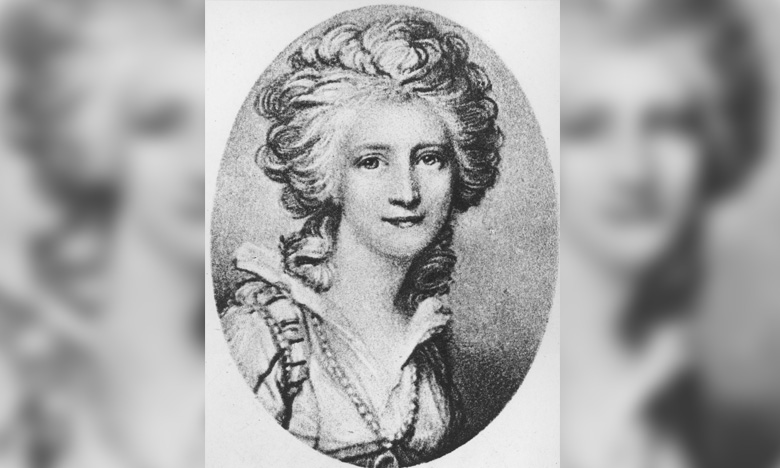When Lady Anne Barnard first set eyes on Cape Town’s iconic Table Mountain in July 1797, she was instantly transfixed. A few weeks later, she resolved to go “where no white woman had ever been,” setting off early one morning with a party of European men and slaves to hike to the top. Dressing the part, she wore her husband’s trousers and tied rope around her shoes for traction.
Even today, with modern equipment and a road to the trail, hiking Table Mountain is no dawdle, but Barnard was not one to focus on negatives: “To feel the pure air raising up … gave me a sort of unembodied feeling such as I conceive the Soul to have,” she wrote, according to The Cape Journals of Lady Anne Barnard.
At the top, after painting a few (very accomplished) watercolors and collecting specimens, she ate a hot supper of “at least a dozen snipes” and even tried the slaves’ fish curry — something she vowed never to do again, owing to its “unaccountable singularity.” Later that night, in a tent pitched at the summit, she wrote in her journal that she and her husband “found a good bed on which two hearts reposed themselves which were truly grateful for all the blessings conferred on them.”
Born Lady Anne Lindsay in 1750, this eldest child of a Scottish Earl was raised to be a beautiful, talented — one of her ballads was set to music by Joseph Haydn — and fiercely independent woman. Her family, rich in titles but short on cash, thought they could marry her off to swell the coffers, but she had a habit of saying no to her numerous suitors. Bored by the insularity of Scotland, she moved to London and into high society; aristocrats loved how she was the life of any party. She took numerous prominent lovers before falling madly in love with William Windham, “a real bad egg who treated her terribly,” says Stephen Taylor, author of Defiance: The Life and Choices of Lady Anne Barnard. After tiring of Windham’s mental abuse, she cut things off.
In 1791, at the height of the French Revolution, she headed across the channel to see the chaos up close before returning to London. By the time she finally married Andrew Barnard, an obscure soldier 12 years her junior, she was 43. No longer desiring life in the fast lane, she wielded her influence to land Andrew a position in far-off Cape Town.
While she spent less than five years in South Africa, it was a happy time in her life. She and Andrew were deeply in love (that they had no children was “not for want of sex,” says Taylor), and she thrived in the simple, nature-filled setting. At first, the Barnards spent a lot of time at Paradise, a small government cottage at the base of the mountain gifted to them by Lord Macartney so that they could enjoy rural life. This was typical Barnard, Taylor says. “She loved throwing parties, but she also liked getting away from it all.”
In 1798, the Barnards embarked on a voyage to the interior, a 700-mile trip undertaken on ox wagons, which convinced her of the Cape’s amazing potential as a bread basket — something the powers that be would not see for decades. On the trip she wrote and painted furiously, marveling at the hospitality of the Dutch farmers and at the sincerity of a church service at a simple mission station. “I doubt much whether I should have entered St. Peter’s at Rome … with a more awed impression of the deity and his presence than I did this little Church of a few feet square, where the simple disciples of Christianity dressed in the skins of animals knew no purple or fine linen, no pride … no hypocrisy.”
In 1800 the Barnards built the Vineyard, the first English country house in South Africa — now a prestigious hotel — in what were then the rural farmlands of Newlands. There she lived, keeping antelope and telling anyone who would listen about the wonders of the country until her return to London in January 1802, when control of the colony passed into Dutch hands.
Dutch rule lasted less than five years, and in 1807 Andrew Barnard returned to the Cape for a temporary posting. Anne had planned to follow, but Andrew died shortly after, aged only 47. His widow was devastated, describing it as a sorrow “not to be soon got the better of.” She even discovered that he had cheated — and conceived a daughter, Christina, with a slave woman. Instead of turning her back on his past, she again ventured down the hard road: transporting the child to London and raising her as her own. Before her own death in 1825, Anne secured Christina a good dowry, and the child married into a prominent Wiltshire farming family. “What Anne Barnard did with Christina was most extraordinary for the time and very brave,” says Taylor. “But that was who she was. She was a woman for our time, a one-off … an aristocrat and a rebel.”

